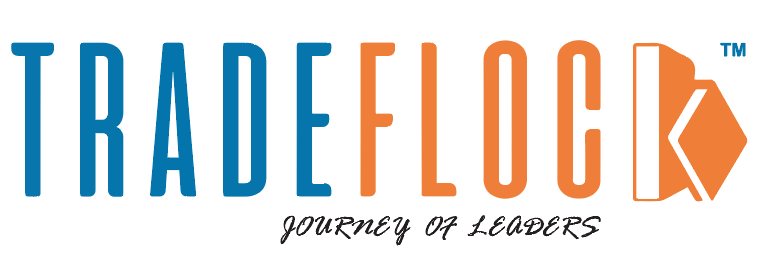Amidst geopolitical tremors, tech disruption, and the climate crisis, one strategy has regained its rightful place on the boardroom table, ‘diversification’. Once regarded merely as a risk management tool or investor portfolio concept, diversification has reemerged as a central driver of innovation, resilience, and long-term competitiveness. In today’s boardrooms, the common is not – Are we diversified?. The question is – “Are we diversified enough, in the right ways, and for the future we don’t yet see?”
Table of Contents
The Shifting Landscape
The 2020s have forced companies to face hard truths. Overreliance on single markets, supply chains, or product lines has exposed them to cascading risks. Whether semiconductor shortages paralysed automotive companies or geopolitical tensions disrupted energy access, the need for broader strategic moats has become undeniable. A 2024 report by Boston Consulting Group (BCG) noted that over 60% of directors surveyed globally had increased focus on risk management through diversification in markets and business models, talent, and supply chains. That number rises even higher to 67% in emerging markets as companies prepare for increasingly volatile global dynamics.
Not Grandfather’s Diversification
Unlike the 1990s trend of unrelated conglomerates acquiring businesses outside their core, today’s diversification is more intentional and data-informed. It’s about synergy, sustainability and strategic alignment. Take Amazon, for instance. Its expansion from books to e-commerce, then to cloud computing (AWS), and now AI-driven services, wasn’t diversification for diversification’s sake. Each leap leveraged existing infrastructure or data capabilities. According to a 2023 McKinsey report, companies that diversify adjacent, entering industries closely related to their core strengths, outperform those that don’t by 15–20% in total shareholder returns over a 10-year period.
Diversification of Thought
Beyond what companies do, diversification is also about who makes the decisions. McKinsey’s landmark “Diversity Wins” report in 2023 revealed that companies in the top quartile for gender diversity on exclusive teams were 39% more likely to outperform on profitability than those in the bottom quartile. For ethnic diversity, the performance differential was similarly striking.
Instead of political correctness, it is about business sense. Diverse teams see more blind spots, challenge assumptions, and reflect increasingly global customer bases. As Harvard Business Review argued, companies with inclusive cultures are twice as likely to meet or exceed financial targets, and six times more likely to be innovative and agile.
JP Morgan echoes this in its research, highlighting that minority-led investment firms consistently deliver alpha, not despite their differences but because of them. Their 2023 analysis of private equity returns showed minority managers outperforming the broader market by a measurable margin.
Supply Chains and The Rise of Regional Diversification
In the pre-2020 era, globalization meant that the cheapest production location won. Today, ‘just-in-time’ transformed into ‘just-in-case’. In 2023, The Economist reported that more than 75% of Fortune 500 companies had restructured or were actively reassessing their global supply chains. India, Vietnam, and Mexico have emerged as alternative production hubs, not to replace China entirely, but to diversify risk exposure. Apple’s recent $2 billion investment to expand production in India is a prime example. It’s not abandoning its Chinese base, but rather creating strategic flexibility, a principle now echoed across boardrooms worldwide.
ESG: The New Diversification Imperative
Environmental, Social and Government (ESG) factors are no longer peripheral. They are fundamental. Companies that diversify into low-carbon technologies or socially responsible products are increasingly attracting investor interest. According to a Harvard Business School case study in 2024, ESG-driven diversification accounted for over $1.7 trillion in global capital flows over two years. Forward-looking boards are now viewing sustainability not as a cost center but as a growth engine, moving into renewable energy, circular economy models, and even carbon offset marketplaces. Unilever’s venture into sustainable personal care and Nestlé’s push into plant-based nutrition aren’t trend-following, their strategic diversification designed to win over the future-conscious consumer.
Human Capital and Organizational Design
As work becomes more digital and decentralized, boards are also focusing on workforce diversification, by geography, skills, and employment models. A study by BCG in 2024 showed that companies offering hybrid work, flexible contracts, and skills-first hiring approaches saw 22% higher retention rates. These organizations also experienced faster innovation cycles due to a more diverse and adaptable talent base. In this context, diversification isn’t about adding more people, it’s about integrating different types of people who can thrive in complex environments.
What This Means for Boards
Boards now face a dual mandate: deliver shareholder value today while preparing for a radically uncertain tomorrow. When executed strategically, diversification addresses both. It spreads risk, unlocks new value pools, and ensures that organizations remain agile. But it requires clarity of vision, a culture of inclusion, and relentless execution. As BCG puts it: “Boards must become architects of resilience, not just stewards of stability.” The resurgence of diversification on boardroom agendas is not a fad. It’s a recalibration. In a world of rolling crises and exponential change, the ability to pivot across markets, technologies, people, and values may be the ultimate differentiator.






